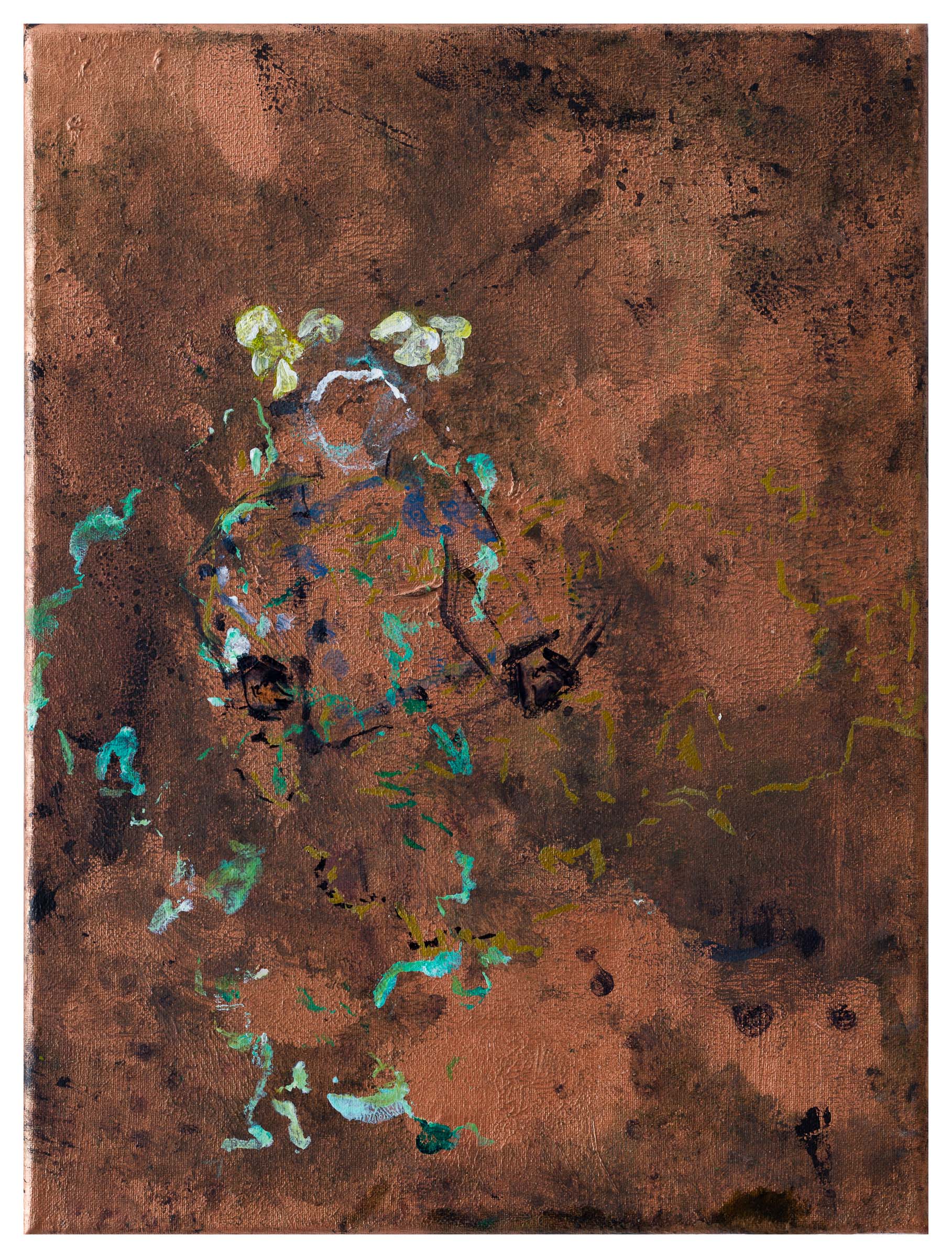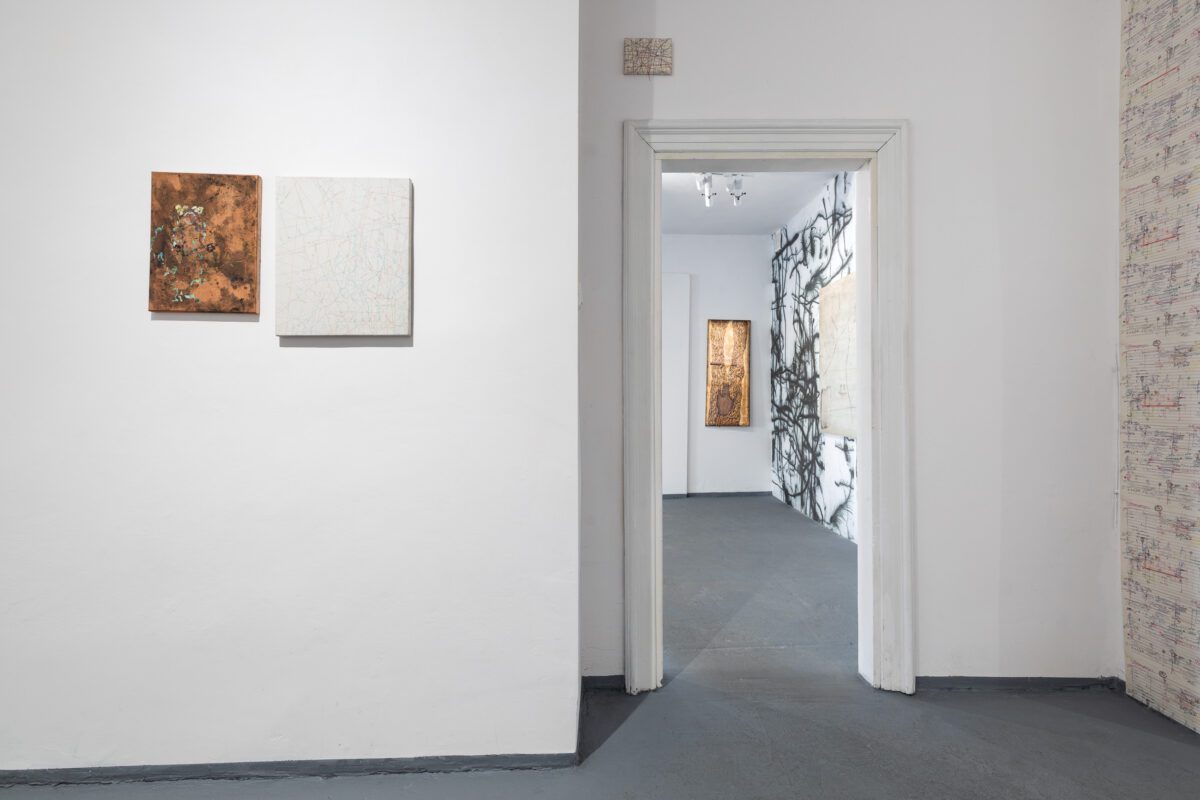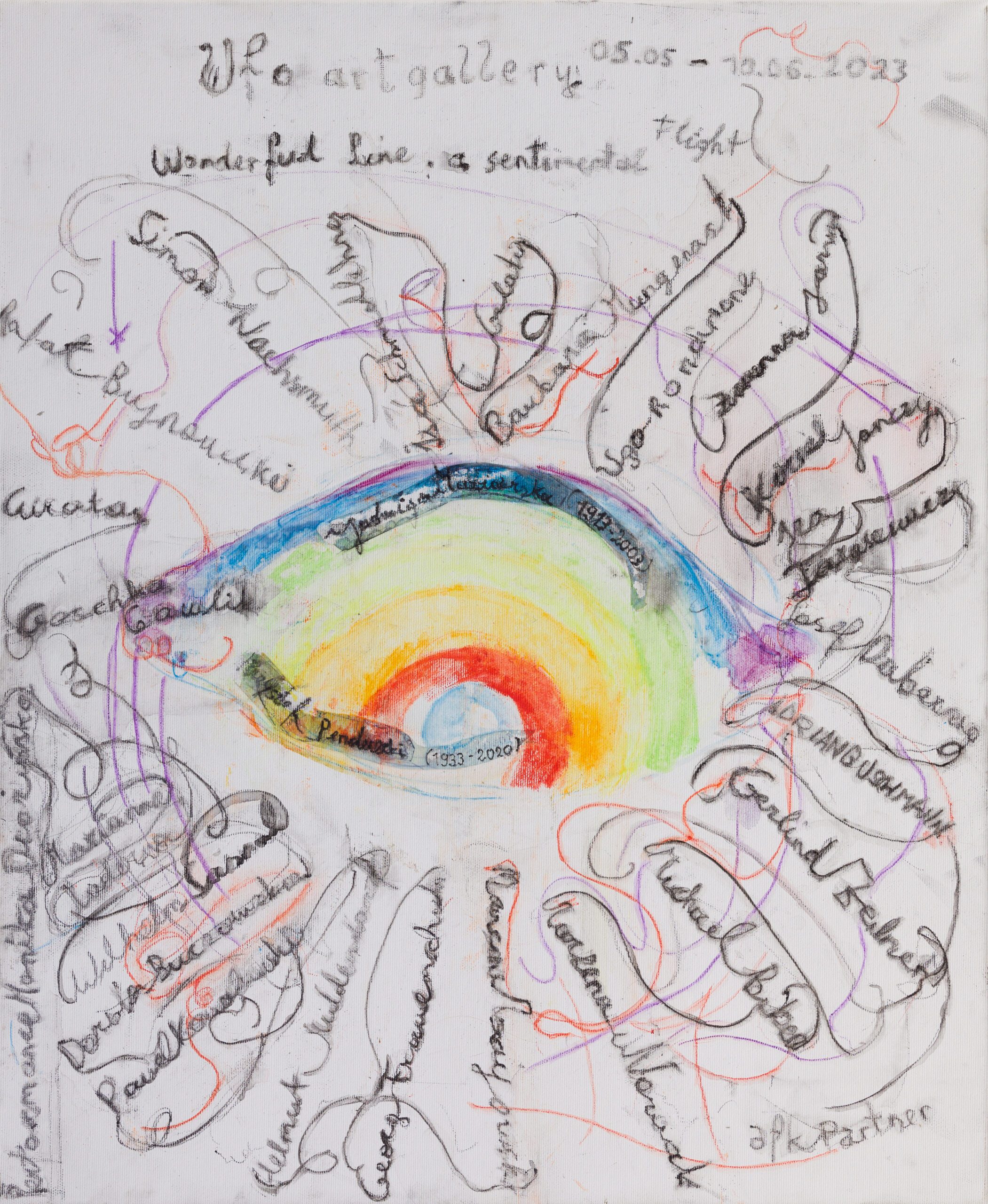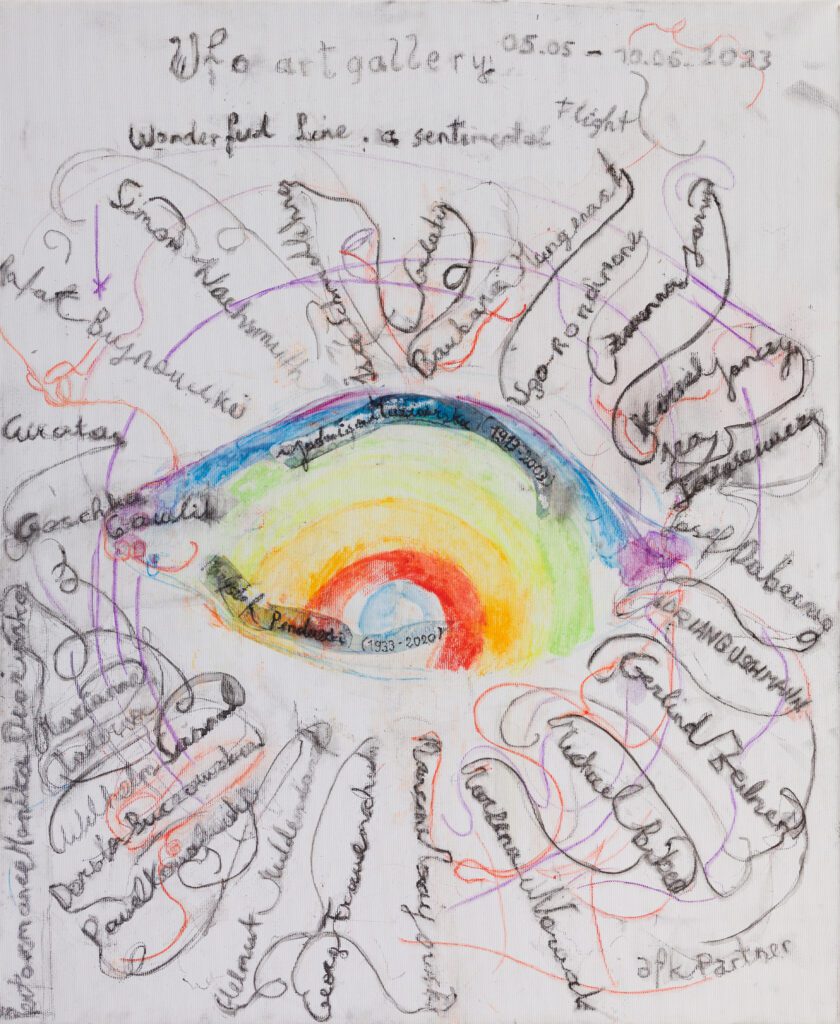Schmidlehner’s second work in the exhibition dates from 2021 and has the French title Fille d’artiste. Compared to the previous one, it veers stylistically more towards a monochrome abstraction and the muted slowing down of a post-modern ‘ecliptic of presence’ (Jean Baudrillard). In the top section, the painting shows the outline of a girlish figure rendered in thin green lines that, despite their fragility, command attention. The lines are partially interrupted, as they are also part of a stencil that shows the branching of Siberian rivers. Like a spider’s web or a curtain of permeable fabric, they surround the rising from between them figure, partially torn amidst patches of earthy copper and black background, rising from between them. It is noteworthy that the painting’s title refers to the long tradition of portraying artists’ children in European painting, although the work also alludes to a model from outside of Europe. Like the girl in the painting by the Chilean painter José Venturellis – depicting a portrait of an artist’s daughter in Chinese dress – the girl-daughter in the Austrian artist’s painting also wears bows, as they are associated with emblems of Soviet times or young pioneers from the GDR. The girl’s hands are pasted on, transparent, as if out of this world. The work is an image of a child, and, at the same time, it is reminiscent of family portraits made in memory of the deceased.








